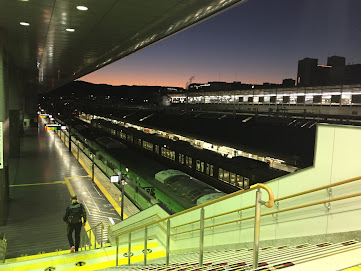Nara : A Day Trip Guide
Nara was the 1st capital of Japan. Previously the city was known as Yamato. Right now, well known for roaming deers, historic monuments, ancient shrines, artworks. This place would be a perfect destination if you like to know about Japanese history and heritage.
There are very few cities in the world like Nara. Its rich history and natural beauty and the authentic lifestyle of the people everything makes Nara unique in its own way. This spiritually and politically famous prefecture is a perfect one-day travel destination from Kyoto and Osaka.
 |
| Kyoto station |
From Kyoto - Those who are using JR pass try to catch JR Nara line train or if you don't have any regional pass then try to catch Kintetsu Kyoto Express or any rapid train of Nara Line.
From Osaka - you can take the Osaka Loop line train which will take around 1hour.
From Tokyo - If you are going on a Kyoto Osaka trip then must save a day for Nara. Just take Tokaido-Sanyo Shinkansen from Tokyo station to Kyoto station then follow the Kyoto - Nara plan.
Nanen-do is an Octagonal Temple in the Kohfukuji complex area. A lively wooden building just across from the 5 storied pagodas in Kohfukuji. This hall was destroyed four times by fire and the most recent one was in 1717. The main icon of this hall is a three-eyed, eight-armed image of the Fukūkensaku Kannon.
 |
| Golden Hall |
Inside the original Central Golden Hall, there is an image of the historical Buddha Shaka Nyorai with two attendant bodhisattvas as well as an Eleven-headed Kannon followed by four heavenly kings.
 |
| Kohfukuji Temple |
 |
| Nara Park |
The Todaiji Temple with a 15-meter-high Buddha is the most prestigious of the seven great temples of Nara. This Todaiji temple is the headquarters of the Kegon school of Buddhism. It is also known as the "Great Eastern Temple". This Tadaiji temple along with Kofukuji Temple, Gangoji Temple, Yakushiji Temple, Toshodaiji Temple, and Kasuga Taisha Shrine became the UNESCO World Heritage site in 1998.
 |
| Murouji |
Not only the places near Nara Park but also some parts of this prefecture are notable for a day trip.
If you want to visit some offbeat location in Nara then must visit these beautiful places. Murouji located at the foot of Mount Murou, this place attracts visitors with beautiful natural scenery throughout the year. To truly appreciate the beauty of the area and for a more leisurely experience, you need to spend a whole day here.
Yoshino is best known for the beautiful mountain view situated in the south part of Nara. This is the best place to see cherry blossoms and bright autumn leaves.
Must watch this video before making your plan.





Comments
Post a Comment